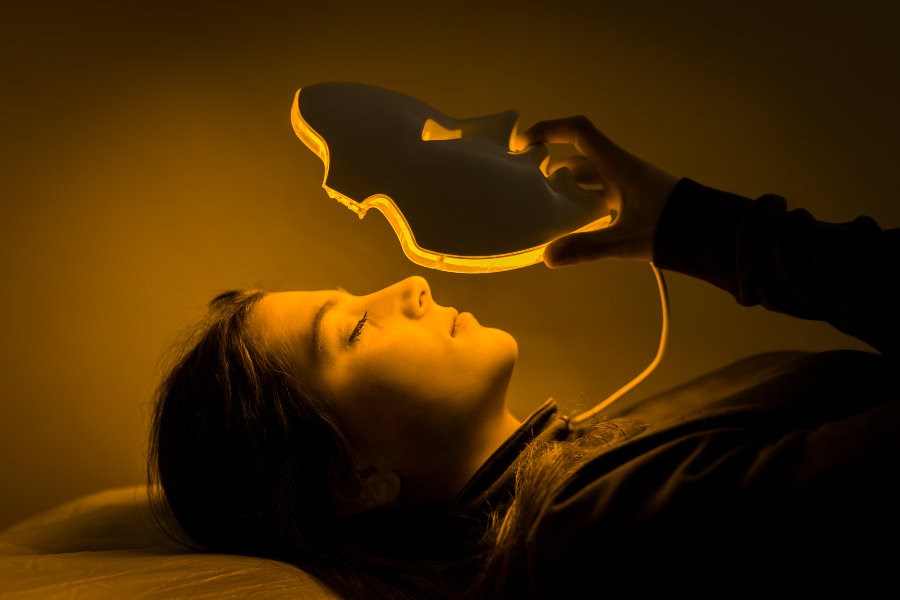LED (light-emitting diode) light therapy is a non-invasive treatment in which a person’s face is exposed to and absorbs different wavelengths of light for supporting collagen production, reducing inflammation, and the like. Once exclusive to spas and skincare centers, LEDs have now become more mainstream and accessible, thanks to at-home devices — and all the celebs using them.
What Does an LED Mask Do to Your Skin?
Each mask employs a different spectrum of light wavelengths that penetrate the skin to trigger changes at the molecular level, says Michele Farber, MD, a dermatologist with Schweiger Dermatology Group in New York City.
Each spectrum of light produces a different color to target various skin concerns.
For instance, red light is designed to increase circulation and stimulate collagen, making it useful for people who are looking to reduce the appearance of lines and wrinkles, she says. A loss of collagen, which tends to happen in aging and sun-damaged skin, can contribute to fine lines and wrinkles, research has found.
On the other hand, blue light targets bacteria that cause acne, which can help stop the cycle of breakouts, notes research. Those are the two most common and popular colors used, but other LED masks on the market use additional light, such as yellow (to reduce redness) and green (to lessen pigmentation).
Do LED Masks Actually Work?
The research behind LED masks is centered on the lights used, and if you’re going by those findings, LED masks can be beneficial to your skin.
In a study with 52 female participants, researchers found that red LED light treatment improved measures of eye-area wrinkles. Another study gave the use of LED devices for skin rejuvenation (improving elasticity, hydration, wrinkles) a grade of “C.” Seeing an improvement in certain measures like wrinkles can take some time, and they argue that more long-term research is needed.
When it comes to acne, one review noted that both red and blue light therapy for acne reduced blemishes by 46 to 76 percent after 4 to 12 weeks of treatment. In a review from 2022, the authors looked at home-based devices and their efficacy on a variety of dermatological conditions, ultimately recommending LED treatment for acne. That said, other research on blue light is far more skeptical when it comes to blue light’s ability to clear skin.
Research shows that blue light penetrates hair follicles and pores. “Bacteria can be very susceptible to the blue light spectrum. It stops their metabolism and kills them,” says Solomon. This is advantageous for preventing future breakouts. “Unlike topical treatments that work to ease inflammation and bacteria on the surface of the skin, light treatment eliminates the acne-causing bacteria in the skin before it begins to feed on the oil glands, causing redness and inflammation,” she adds. Because red light reduces inflammation, it also may be used in combination with blue light to address acne.
But it’s helpful to keep your expectations in check. “Not all at-home devices deliver the same strength that a clinical device can. What can be accomplished at home will not always have the same effect as what can be achieved at a dermatologist’s office, where treatment is calibrated and regulated,” says Solomon.


